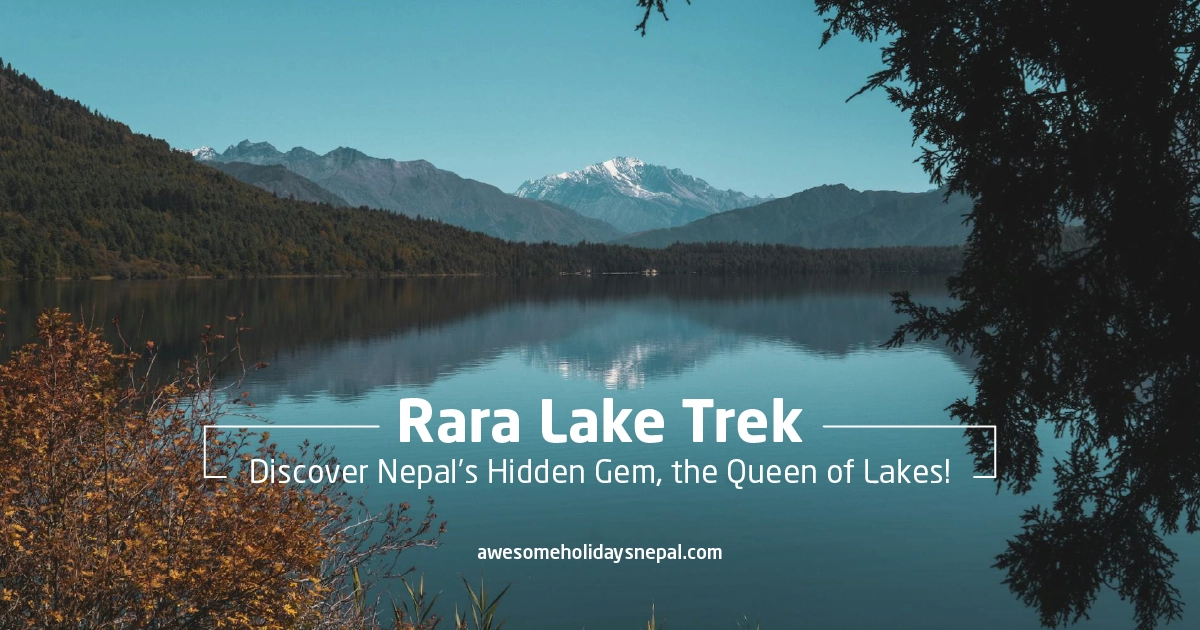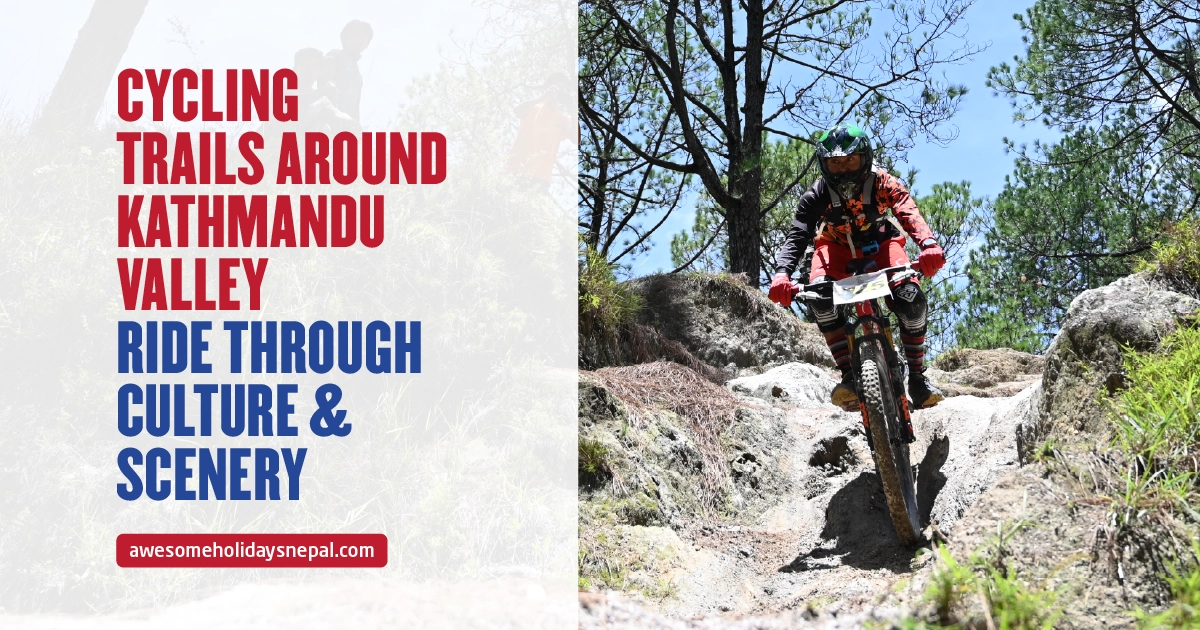Everything to Know Before Tsum Valley Trekking

The Tsum Valley Trek is one of Nepal’s most culturally and naturally enriching trekking experiences, a hidden gem in Nepal’s Manaslu region, offers an off-the-beaten-path trekking experience filled with ancient Buddhist culture, breathtaking landscapes, and remote Himalayan villages.
The Tsum Valley Manaslu trek is an excellent alternative for those seeking solitude compared to the crowded Annapurna and Everest routes.
If you’re looking for a remote adventure, the Tsum Valley Trek offers breathtaking landscapes and ancient Buddhist heritage. Here are the 10 most important aspects to know before trekking in Tsum Valley.
Where is Tsum Valley?
Tsum Valley is located to the east of Manaslu on the Tibetan border in the Gorkha District. The name “Tsum” translates to “vivid” in Tibetan, reflecting the valley’s vibrant cultural and natural beauty. Tsum Valley of Nepal is home to the descendants of the Tibetan community called Tsumbas. This valley is a restricted trekking region known for its preserved Tibetan Buddhist heritage, dramatic mountain scenery, and traditional stone-built villages.
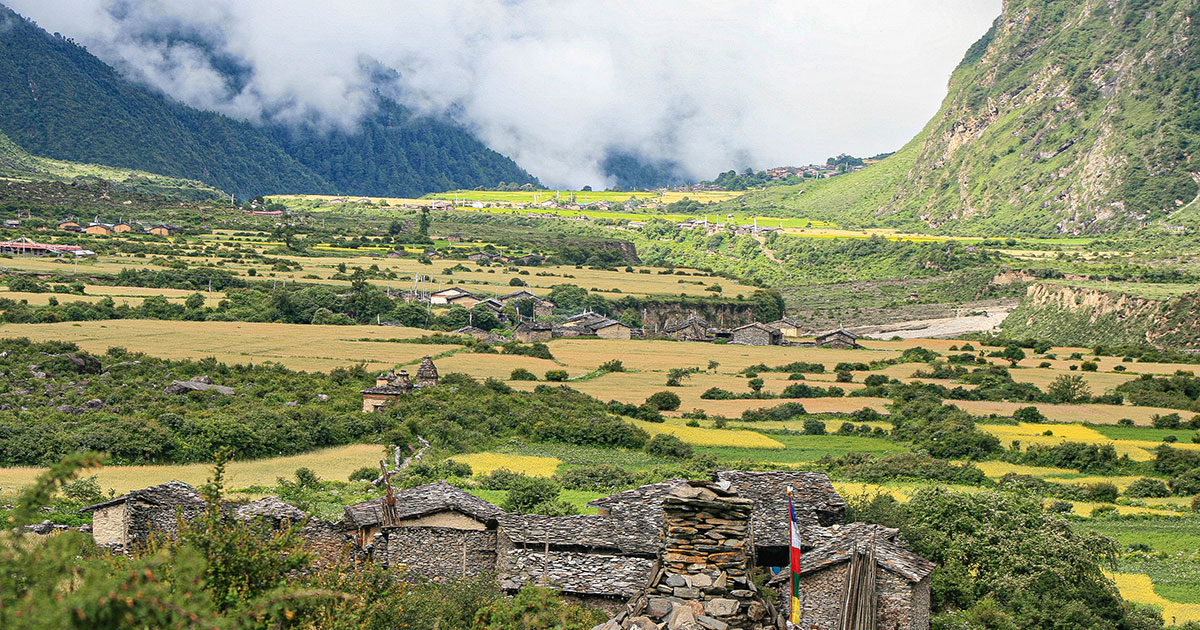
The trail to Manaslu Tsum Valley trek splits from a place called Ekle Bhatti, and the journey continues to Lokpa, “The Valley of Happiness” as blessed by the great Padmashamva. The Tsum Valley Trek takes you through the hidden valley of happiness, deeply rooted in Tibetan Buddhist traditions.
How Difficult is Tsum Valley Trekking?
Tsum Valley trek varies from a moderate to challenging trek. The trail involves several ascents and descents, with altitudes reaching over 4,000 meters. Proper acclimatization and good physical fitness are essential for a successful trek. The rugged trails, suspension bridges, and rocky paths make it an adventurous journey.
Trekkers should be prepared for long hiking days, usually 5-7 hours of walking per day. Proper acclimatization and good physical fitness are essential to be safe from Acute Mountain Sickness (AMS). Carrying a trekking pole can be helpful, and those with knee or back issues should be extra cautious.
What is the Best Time for Tsum Valley Trekking?
The ideal time for trekking in Tsum Valley is spring (March-May) and autumn (September-November) seasons. These seasons offer predictable weather, open skies, and stunning panoramic mountain views.
Some experienced trekkers prefer Winter trekking but is more difficult and demands extra preparation.
- Spring (March-May) is when the rhododendrons bloom, adding vibrant colors to the landscape. The temperature is moderate, making trekking pleasant.
- Autumn (September-November) offers the best visibility, dry weather, and comfortable temperatures making this the most popular season.
- Trekking during the winter (December-February) is difficult as the snowfall makes the trek difficult, but it offers solitude for experienced trekkers.
- Tsum Valley Trekking during Monsoon (June-August) is not suggested as the trail becomes muddy and slippery due to heavy rainfall, increasing the risk of landslides
Tsum Valley Trekking Permits
The Tsum Valley Trekking was not open for foreign trekkers until 2008. Since Tsum Valley is a restricted area, trekkers need special permits to trek in the Tsum Valley of the Manaslu region.
Three types of permissions are required for Tsum Valley Trekking.
- The Department of Immigration Office provides the Restricted Area Permit (RAP).
- Manaslu Conservation Area Permit (MCAP) is required for entry into the area and
- Annapurna Conservation Area Permit (ACAP) is needed as certain sections of the trek belong to the Annapurna Conservation Area.

All permits must be arranged through a registered trekking agency like Awesome Holidays Nepal.
Manaslu Tsum Valley Trek Special Permit: | Price per Individual |
| September to November | USD 70 per week and after 1 week |
| USD 10 per day | |
| December to August | USD 5O per week and after 1 week |
| USD 7 per day | |
Manaslu Conservation Area Permit | NRS 3,000 per individual |
| Permit for foreigner | |
| Manaslu Conservation Area for SAARC | NRS 3,000 per individual |
Tsum Valley Trekking Itinerary
A standard itinerary takes about 14-18 days, starting from Soti Khola and following the Budhi Gandaki River. Some major stops are:
- Lokpa – Gateway to Tsum Valley.
- Chumling, Chhokangparo – Traditional Tsum villages with monasteries.
- Mu Gompa (3,700m) – The highest point of the trek.
- Dumje, Ripchet – Remote settlements with breathtaking views.
- Tatopani – A natural hot spring to relax after days of trekking.
Individual trekking day involves scenic hikes through lush rhododendron forests, narrow gorges, and stunning mountain backdrops.
Cultural and Religious Significance
The trek also offers a glimpse into the traditional livelihood of the people who have thrived in this harsh Himalayan environment for centuries. Along the way, trekkers also encounter Tibetan shepherds, who move between seasonal pastures with their yak and sheep.
Local people practice Tibetan Buddhism and follow a traditional lifestyle. The Tsum Valley trek offers a rare opportunity to visit centuries-old Buddhist monasteries, sacred caves, and prayer wheels along the trail. Sometimes, you get to interact with monks from some important monasteries on the trail like the Mu Gompa (3,700m) and Rachen Gompa. the monks and the Buddhists who have continued the traditional way of life, provide insight into ancient Buddhist practices. Tsum Valley is a sacred Buddhist region with ancient monasteries, chortens, and Mani walls.
The great Buddhist saint Guru Milarepa meditated in this valley as he was on his mission to travel, understand, and teach Buddhism to the locals. Hence this valley is one of the sacred places for Buddhists and prohibits killing animals. Completing the Tsum Valley Manaslu trek is a rewarding experience for those who seek both adventure and cultural immersion.
Accommodation and Food
The trek offers basic tea houses and lodges with traditional Nepalese meals like Nepali dal bhat, Tibetan bread, and momos. Higher altitudes have limited facilities, so carrying extra snacks and warm clothing is recommended. Electricity and Wi-Fi are accessible in the lower regions but become scarce at higher altitudes. Charging devices may cost extra. It is advised to carry your power backup and chargers.
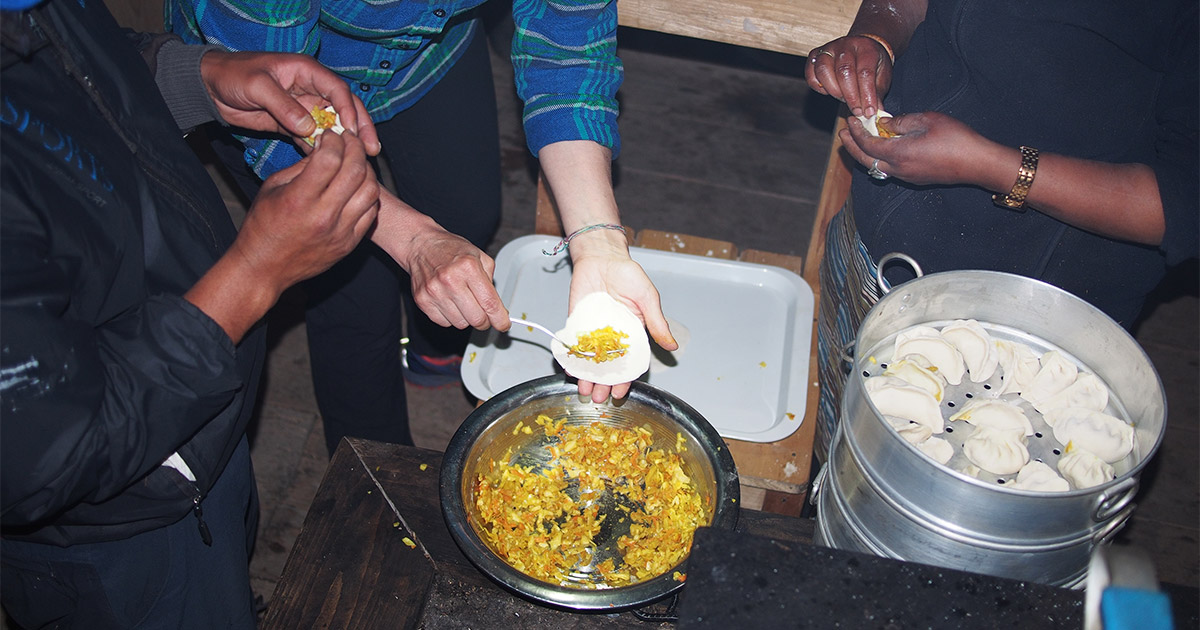
Altitude Sickness and Acclimatization
The decreasing air in mountainous regions causes various issues like acute mountain sickness (AMS). Rugged terrain and cold breeze make Tsum Valley Trekking difficult. Proper acclimatization and slow ascent are crucial for a safe and enjoyable trek as you reach high altitudes. To avoid Acute Mountain Sickness (AMS), one must follow the following steps:
- Take rest days (acclimatization).
- Stay hydrated.
- Ascend gradually and slowly.
- Carry necessary medications like Acetazolamide. (Diamox).

Hiring a Guide and Porter
Since Tsum Valley is a restricted region, hiring a licensed guide is mandatory. A guide ensures safety, navigation, and cultural insights. Porters can carry your luggage, making the trek more comfortable.
Wildlife, Birds, and Vegetation
The Tsum Valley Manaslu trek allows you to explore a unique Himalayan ecosystem rich in rare flora and fauna. Tsum Valley is rich in biodiversity, as it falls within the Manaslu Conservation Area. Trekkers might spot rare Himalayan wildlife such as snow leopards, musk deer, and Himalayan tahr in the remote highlands.
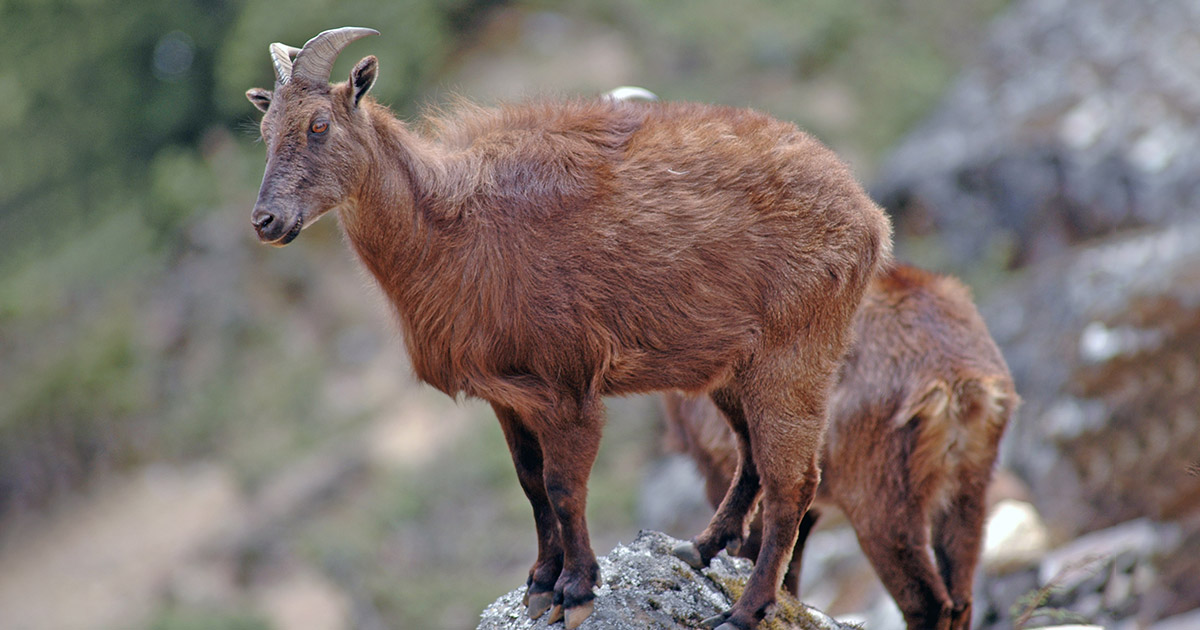
The valley is also a paradise for birdwatchers, with species like Himalayan monal, snow partridge, and different species of pheasants commonly found along the trails. The blossoming rhododendron and lush woodlands of pine, and juniper forest make for a vibrant and scenic journey, especially in spring.
Additional Tips for a Successful Tsum Valley Trek
- Tsum Valley is a restricted area. It remains a mystery world to protect the bon and Buddhism of the area. One must follow the local customs, respect tradition, dress modestly, and seek permission before taking photographs of people and religious places.
- ATMs are unavailable in the valley, so bring enough cash for expenses. You are advised to bring smaller changes or notes of lower dominations.
- Start your cardio from right now to strengthen your endurance, and get the necessary training, and hiking exercises before the trek.
- Ensure your insurance covers high-altitude trekking and emergency evacuation.
Final Thoughts
Tsum Valley is a breathtaking and spiritual trekking destination offering a mix of adventure, nature, and culture. Whether you’re an experienced trekker or a first-time visitor, preparing well for the journey ensures a rewarding experience.
For a hassle-free trek, book your adventure with Awesome Holidays Nepal, where we take care of all logistics, permits, and trekking arrangements. Ready for an unforgettable journey?
Contact us today to plan your Tsum Valley trekking experience!
FAQs
Expand AllAre there ATMs available during the Tsum Valley trekking?
No, ATMs are not available along the trail. Withdraw cash in Kathmandu or Arughat. Get changes of notes below Rs 500.
Are there toilet facilities at the tea houses? What opportunities will I have for a shower during trekking?
Yes, basic toilets are available. Bucket showers or solar-heated showers can be found in some lodges.
Can I buy the gear in Nepal and sell it afterward?
Yes, you can buy trekking gear in Kathmandu and sell it later at second-hand gear shops in Thamel.
Do I need insurance for Tsum Valley trekking?
Yes, travel insurance covering high-altitude trekking and emergency evacuation is strongly recommended.
I need to bring any personal equipment like sleeping bags, down jackets, trekking poles, etc.?
Yes, carrying your own sleeping bag, down jacket, and trekking poles is advisable for comfort and safety.
Do I need to tip my porter and guide?
Yes, tipping is customary. The amount depends on your satisfaction with their service.
How long do I need to walk per day during my trek to Tsum Valley?
You will typically walk 5-7 hours per day, depending on the itinerary.
Is it safe for Tsum Valley trekking?
Yes, it’s generally safe, but proper preparation and acclimatization are necessary.
I am a vegetarian. Am I supposed to get enough meals on my trek?
Yes, vegetarian meals are widely available in tea houses along the route.
I have never hiked before. Can I do the Tsum Valley Trek?
Yes, but prior fitness preparation and a slow trekking pace are recommended.
Is there Wi-Fi on the trek?
Limited Wi-Fi is available in some tea houses, but the connection is slow and unreliable.
What is the best season for Tsum Valley Trekking?
Spring (March-May) and autumn (September-November) offer the best weather and views.
What is the mode of transportation for Tsum Valley Trekking?
A drive from Kathmandu to Arughat/Soti Khola, followed by trekking.
What problems can arise at high altitude?
Altitude sickness, headaches, nausea, dizziness, and shortness of breath can occur. Acclimatization is key.
Related blog posts
Discover a choice of tourist destinations loved by most of our visitors. Whether you're on a jungle safari to spot rare animals or walking through a world heritage site, these well-planned itineraries cover the major highlights of Nepal.



